How do coilovers ride?
This is probably one of first questions you think of when considering a new, performance suspension setup. If it isn’t, it should be. Every brand will have different characteristics when it comes to ride quality or performance. Some manufacturers, ourselves included, will actually offer multiple options for each vehicle to cater to different vehicle owner preferences so it’s important to know what you’re getting into before dropping the cash on your next suspension setup.
Raceland: we’re all about the street.
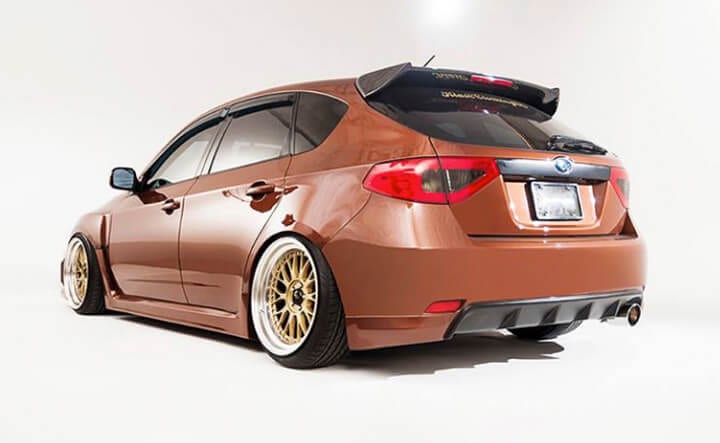
Let’s face it; that performance build you have been working on for the last few years will likely see very minimal time on a track, if any. It’s okay, we’re guilty of it too. In fact, we have employees here that build up “track” vehicles just to sell them because they’re too harsh and loud on the road each day. They then buy and build their next car into the exact thing and the cycle starts again. Sound familiar?
With that in mind, we understand that 99% of coilover owners are going to be using their vehicles primarily on the street. So rather than build you a coilover for all out performance, we’re going to cater our offerings to what they’re used for the most: the street.
Does this mean they are of lesser quality than a full performance coilover? Absolutely not. This just means we don’t go overboard with overall coilover stiffness and keep it reasonable so that it’ll be comfortable to be used day in and day out. Does this mean they won’t give you a performance increase? Absolutely not. Since most coilovers are also going to allow you to lower the ride height, the spring and shock rate should be increased to avoid the suspension crashing and bottoming out. Doing so will offer a performance bump to most any vehicle. Does this mean I can’t occasionally take my car with Raceland coilovers to the track? Absolutely not. In fact, we have a customer who won their state championship Autox with their Miata and a set of Raceland coilovers. You just need to keep in mind that if your vehicle is a dedicated track toy, there might be better options for you.
What can affect ride quality?
Believe it or not, your spring and shock combo aren’t the only determining factors of ride quality. Yes, they play a big role in that, but they aren’t the only thing. Let’s briefly go over some of the most common, basic parts that will affect ride quality.
Spring Rate
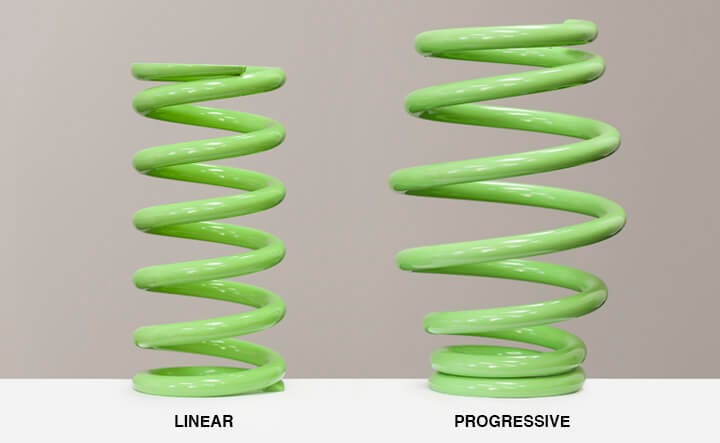
Simply put the spring rate is going to be how much pressure or force is necessary to compress the spring within a given measurement. The stiffer the spring rate, the stiffer the ride. A linear spring will mean that regardless of how much the spring is compressed it will require the same amount of pressure or force to compress it further. A progressive spring will mean that the more the spring is compressed the more pressure or force will be required to compress it further; it progressively gets stiffer. Spring rate will be another blog post for another time.
Damper Rate
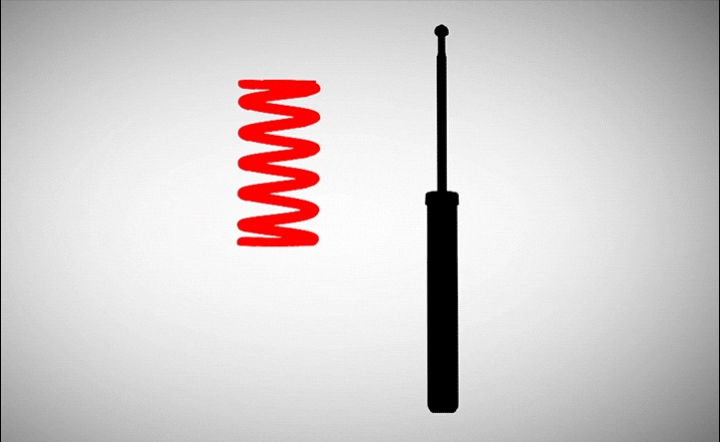
The damper’s primary objective is to stop the oscillation of the spring; once it is compressed to help it get back to its normal state rather to continue to bounce. It will still affect ride quality though; a stiffer shock will help get the spring back to the normal state faster which in turn creates a feeling of a suspension that is more stiff. A damper that is softer will take longer to bring the spring back to normal state and gives the feeling of being bouncy or too soft.
Tire Size
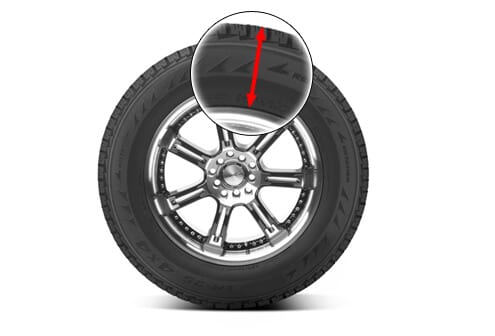
Tires can be an easily overlooked component to ride quality; particularly the tire’s side wall size. When the tire has a smaller side wall the tire manufacturer increases the rigidity of the tire construction to maintain the tires ability to control the vehicle. With a larger side wall the construction doesn’t have to be as rigid. With more side wall the tire will be softer and translate into a more comfortable ride than one with a thin side wall.
Wheel Size

Wheel size goes hand in hand with tire size. Typically, the larger wheel you put on the vehicle the smaller the side wall of the tire will be. This isn’t true in all cases but in most cases to ensure proper wheel/tire clearance to the vehicle this will be true.
Strut Mounts
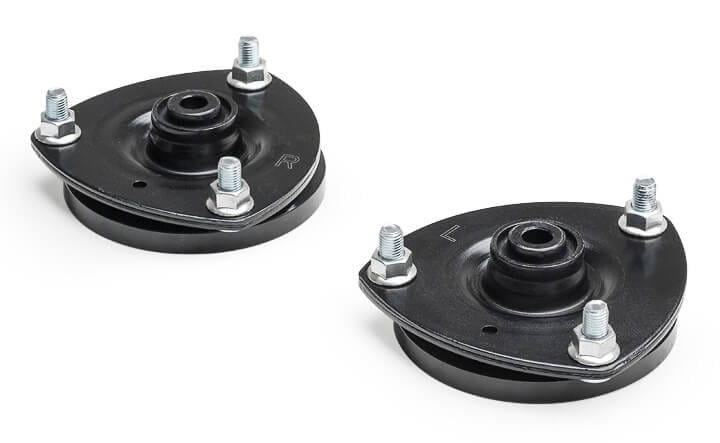
In our experience, strut mounts are probably one of the most overlooked components to ride quality. A strut mount is going to act as a cushion between the strut and the body of the vehicle. This mount will have a large rubber component to its construction. If you were to remove this mount and replace it with a camber plate, these often will have no rubber to them. By removing that cushion, you are transmitting the road harshness directly to the vehicle making it feel much stiffer than it actually is.
Now say you have rubber mounts in there and they have been there for the life of the car; 60k miles. Well these components will have considerable wear to them and won’t be providing the same benefit as a new set and often will feel very soft and spongy. This could then cause you suspension setup to feel softer or bouncier than it really is.
Other Modifications
This may be obvious but it is worth mentioning. Other modifications that you have done to the chassis of the vehicle can result in changes in ride quality. Polyurethane bushings are a popular modification but will be much stiffer than the normal rubber used for the bushing. This has a direct effect on ride quality. You may also lower the vehicle drastically so that your suspension geometry is quite a bit off from where the manufacturer designed it. This will also pay part in how the suspension feels. Keep these things in mind when assessing the ride quality.
Are they right for you?
So, the million-dollar question: are Raceland coilovers right for you? Let me put it this way; if you use your vehicle primarily on the street, are looking for a drop, and want to tighten up and improve the street performance of your vehicle then Raceland coilovers are probably a good fit. It is important to note that ride quality is relative. Everyone’s opinions will be different; everyone likes it a certain way. We understand that and that is why we offer a 30-day money back guarantee. We design the coilovers to be a good balance between street comfort and performance but if you’re not 100% satisfied with them after you install them, send them back within 30-days for a refund. Sounds pretty good, right? You don’t have much to lose.






I have shocks I have hard or soft which one should I put it on I wanna ride like stock my car bouncy, so which one should I put it on for smoother ride soft or hard?
Usually, if the ride is bouncy, the spring is under damped which would mean that raising the damping rate would improve the ride.
I have a 2019 Honda Civic Sport Hatch 6 Spd Manual 1.5T. It easily gets upset over bumps on the highway. Literally wiggles. Guessing it’s b/c of its short wheelbase. I’m cool with the stock height. Nonetheless, I’m considering coil overs to get rid of the wiggle and to enhance or upgrade suspension performance. Please advise.
The spring and damping rates are higher than stock so it will have a more planted feeling to the road. Let us know if you have any other questions!
I put coilovers on the PT Cruiser GT. Will an increase in ride height allow for a smoother or softer ride? If so, I assume that this would than allow for more travel of the strut/shock. Is this accurate?
Not necessarily. Depending on what type of springs you’re using, it can increase the spring rate by raising it, making the ride stiffer.
I have a 1995 Acura Integra LS Sedan w/coil overs but I don’t know the brand. They are too stiff for my liking. How do I soften the ride without adjusting the height?
It will depend if the kit you have has adjustable damping. If you’re kit doesn’t offer adjustable damping, you can replace the bushings in your suspension or use tires with a larger side wall to smooth out the ride.
I have a 2003 330xi, I want to give it slight drop to close the wheel gap, less body roll/feel more planted through corners, but don’t want to sacrifice too much of the “cushiness” of the monster truck stock suspension..
While we don’t offer anything for the XI, we’d recommend a set of lowering springs. They will provide a good compromise of comfort and performance as they will use your stock shocks. Feel free to give us a call if you have any other questions!
I have a 2012 toyota rav4 sport. I have the 18 inch wheels but no longer have the run flat tires. i have changed to 225/60R18. the ride is still brutally firm. I would like to change out the coil over struts but retain current ride height. what do I need to do? I definitely need to soften the ride somehow.
So, you currently are running the stock suspension?